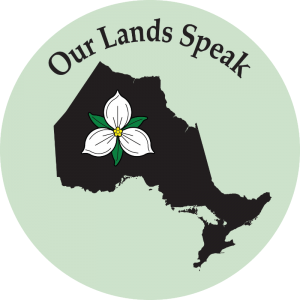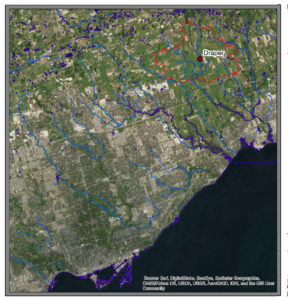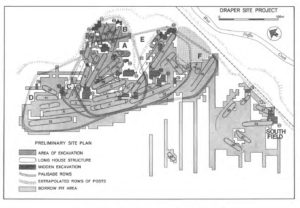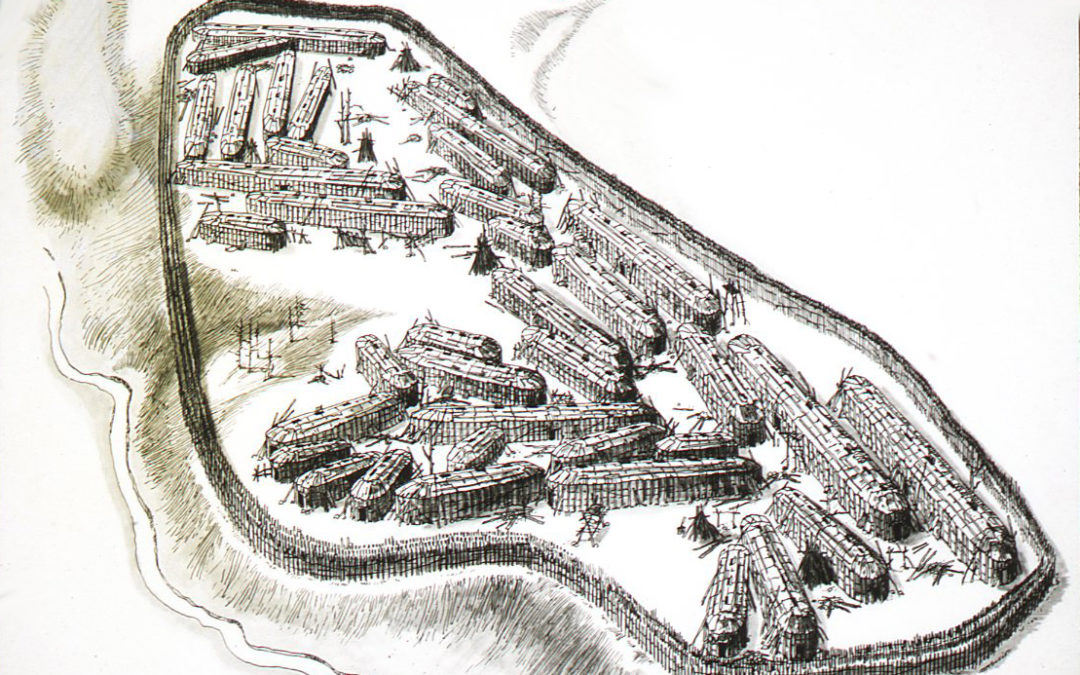Happy New Year and welcome to part 2 of my reflections. I am especially grateful  for the opportunity of time and resources to impart the vast information I’ve acquired working in this field for 50 years. As you might know, I strongly believe it is meant to be shared with the public, to enrich our knowledge of the 12,000-year history of Ontario by Indigenous Peoples and the 17th to 19th century Euro-Canadian history and broaden the discussion to be more inclusive and beneficial for all who seek it and see its tremendous value.
for the opportunity of time and resources to impart the vast information I’ve acquired working in this field for 50 years. As you might know, I strongly believe it is meant to be shared with the public, to enrich our knowledge of the 12,000-year history of Ontario by Indigenous Peoples and the 17th to 19th century Euro-Canadian history and broaden the discussion to be more inclusive and beneficial for all who seek it and see its tremendous value.
Picking up where we left off in my previous blog, these excavations provided a wealth of knowledge which was incorporated into my 600-page Ph.D. dissertation published by the National Museum of Man in 1977. More than 40 years later, it remains the most comprehensive study of the Saugeen culture hunters and gatherers in southwestern Ontario between about 500 B.C. and 700 A.D.

Location of Draper Site from Finlayson (1985:60)
The ability to run my own excavations for my graduate research provided me with exceptional experience as alluded to above, including making on-the-spot decisions about where to dig next, and the exhilaration of finding exceedingly rare artifacts such as two copper pan pipe covers, musical instruments dating to the first few centuries A.D. (Only 113 of these have been found in all Eastern North America). The discovery of these musical instruments in southwestern Ontario, which were probably manufactured in Ohio, provided whole new insights into the ritual activities and trade networks of Indigenous peoples living in what is now Bruce County in the first few centuries A.D.
Excavating the sites, washing and cataloguing the artifacts, preparing final maps of the excavated areas, preparing photographs of the field work and artifacts, and especially being one of the first to use a computer program to process artifact data, all provided incredible knowledge equipping me for the exciting yet unknown projects to come in my not-to-distant future. This included the task of undertaking the 1975 and 1978 excavations at the Draper site, a Late Woodland village to be destroyed by the proposed construction of the New Toronto International Airport in Pickering. In this project, we discovered a site comprised of a total of 45 longhouses; it began as a small village of about eight longhouses and about 400 people and expanded five times to become a very large village of 37 houses and almost 2,000 people. Forty years later this remains the most significant excavation of a Late Woodland Indigenous village in Ontario. (More on this in an upcoming blog).
The net result for me was that those first three site excavations provided the

Artists Conception of the Draper Village, Artist Ivan Kocsis, from Finlayson (1985)
experience, knowledge, and perspective to pursue an exciting career involving the excavation of a variety of sites in different parts of the province to shed further light on aspects of our history which can only be told by archaeological investigations.
Today, most of the excavations in Ontario are undertaken because the sites are to be destroyed by a variety of developments such as housing subdivisions, pipelines, and highways. Increasingly, the emphasis is on operating a viable, archaeological resource management company which complies with the Standards and Guidelines of the Ministry of Tourism, Culture and Sport. Generally, there is little time to undertake research and publication of the outcomes of this work and the resulting contributions vital knowledge.
Rarely now are graduate students able to undertake original field work to pursue their research interests and, in some instances, they are given no choice but to write their graduate theses on topics selected by their supervisors. As a result, and unfortunately, these students are not provided with the opportunity to develop the skills and mindset required to pursue well-rounded, problem-oriented field work, and they miss the experience of working diligently on original field studies, thereby preparing themselves for future field projects. Some highly competent individuals end up quitting graduate school rather than undertake the directed studies of their professors.
This year we are planning to expand our program of publication with the introduction of a second series to Our Lands Speak. This will involve Archaeology Papers addressing some of the more academic issues relating to contributions to knowledge in Ontario Archaeology. This digital series will provide a professional publication outlet currently lacking in Ontario Archaeology due to the restrictive actions of the gatekeepers who aim to control some of the current publications and their content. Such is the way in many fields and industries I suppose. Yet given the abundant and varied career path I’ve followed, I am humbled and obliged to be able to fill this space authentically.
In 2019, I also look forward to unveiling the third volume in Our Lands Speak series. It will be another exciting year with lots of critical work happening behind the scenes so as to provide you with a growing encyclopedia-like compilation on Ontario archaeology to honour our history as it deserves.
Thanks for joining me on the journey.
Kindest regards,
Bill Finlayson
William D. Finlayson, Midland, Ontario
Ontario’s Leading and Senior-Most Archaeologist and Author
